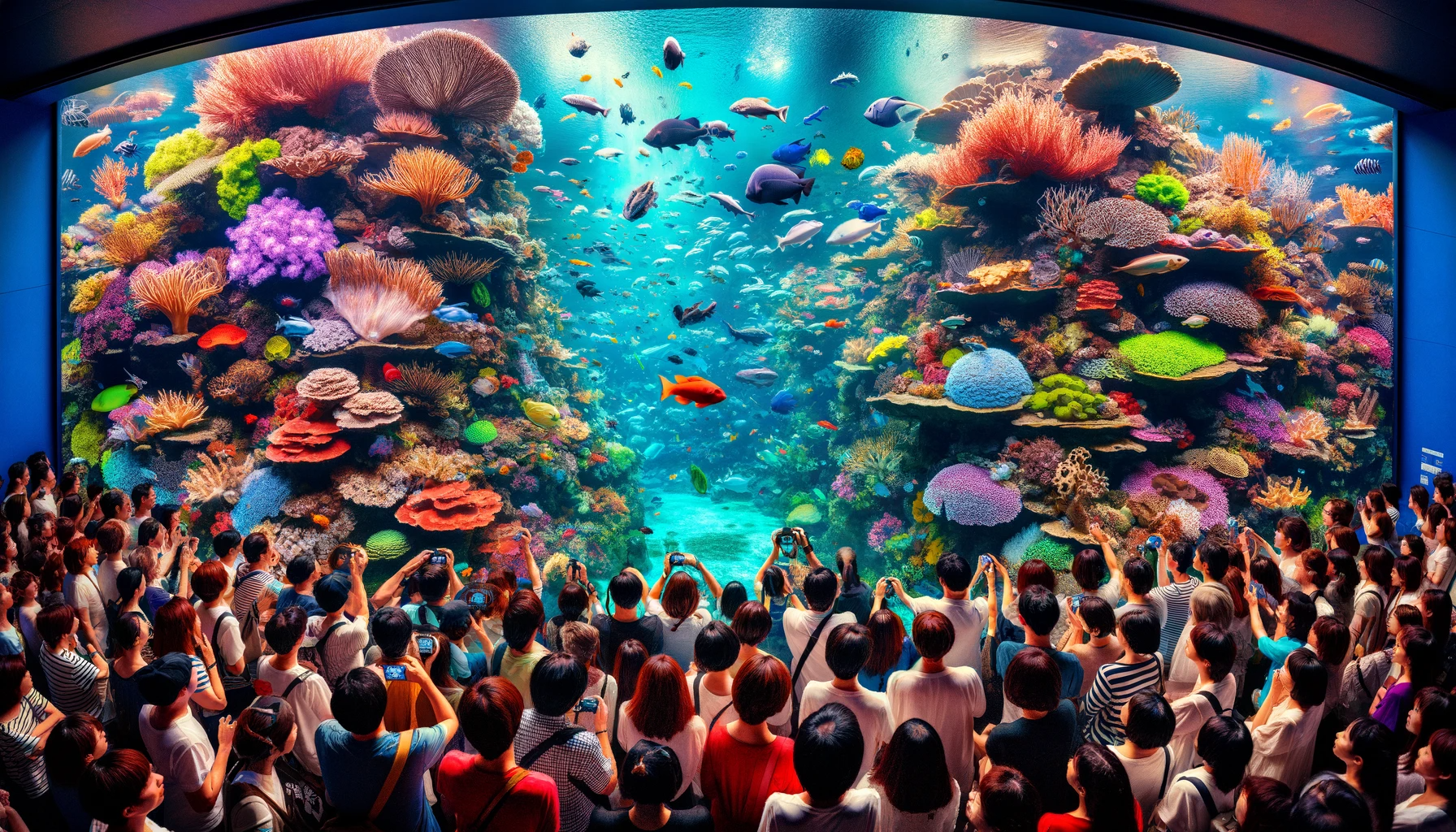As an aquarium expert, I know that mastering the essentials of water chemistry is crucial for any successful aquarium. One key element in this delicate balance is KH, or Carbonate Hardness. This term might seem technical, but it’s quite simple and extremely important in maintaining a healthy aquatic environment.
KH measures the concentration of carbonate and bicarbonate ions in your aquarium water. These ions are vital for stabilizing pH levels, creating a safe and stable habitat for your fish and plants. In the dynamic ecosystem of an aquarium, even slight shifts in pH can be detrimental, and KH acts as a buffer against these changes.
But understanding KH isn’t just about keeping your water parameters in check. It’s about providing the best possible environment for your aquatic life. Different species require different KH levels, and being adept at managing these levels is key to their health and vitality.
In the grand scheme of water chemistry, KH, alongside pH and GH (General Hardness), forms the cornerstone of a well-balanced aquarium. My journey in aquaristics has taught me the significance of each of these elements and how they interplay to create a thriving underwater world.
Through this guide, I aim to simplify the complexities of KH, making it accessible and understandable for both beginners and experienced aquarists. Let’s dive into the fascinating aspects of KH and discover how to harness its potential for the health and beauty of your aquarium.
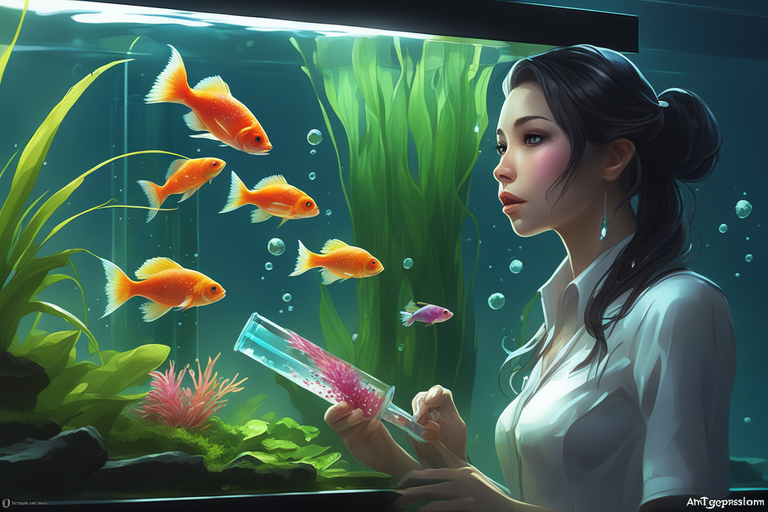
Key Takeaways
- Water hardness refers to the amount of dissolved mineral content in water, and it is a critical parameter in a freshwater aquarium.
- Temporary hardness refers to minerals that settle out when water is boiled, while permanent hardness refers to mineral salts that remain dissolved in water. Understanding the difference between the two can help in managing water quality in aquariums.
- Carbonate hardness (KH) measures the carbonate and bicarbonate minerals in water and affects pH stability in aquariums. Maintaining a minimum KH level of 4°d KH is advised for a stable aquarium environment.
- General hardness (GH) measures the total amount of dissolved minerals in water and is important for the health of aquarium livestock. The appropriate GH level depends on the species of fish and plants in the aquarium.
Understanding Water Chemistry: KH and Gh in freshwater aquariums
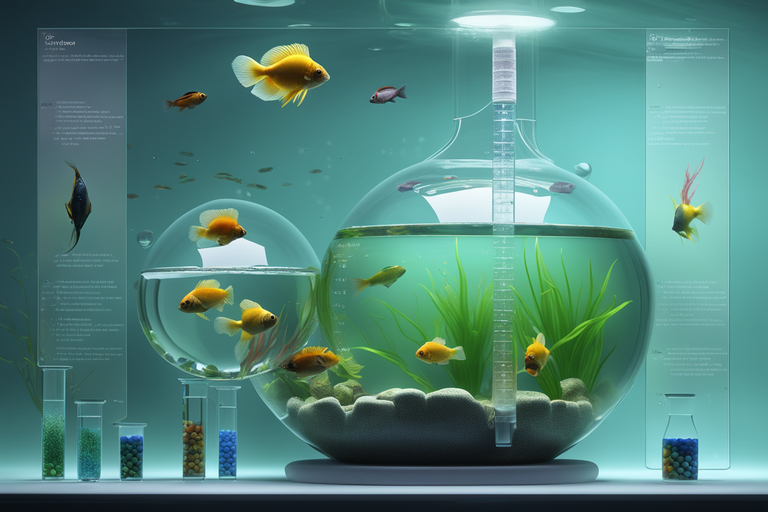
For any aquarium hobbyist, understanding water chemistry parameters like KH and GH is imperative.
KH, or carbonate hardness, and GH, general hardness, are both measures of certain mineral content in the water.
These parameters play a critical role in maintaining a stable environment, directly influencing the health and well-being of the aquarium’s inhabitants.
What is KH (Carbonate Hardness)?
KH, or Carbonate Hardness, is a vital parameter in aquarium water chemistry, representing the concentration of carbonate (CO3) and bicarbonate (HCO3) ions. These ions originate from various sources, such as limestone, which is rich in calcium carbonate (CaCO3). Water passing through limestone regions becomes enriched in both calcium and carbonates, influencing the KH level.
Understanding KH is crucial as it directly impacts the pH stability and buffering capacity of your aquarium. The higher the KH, the greater the concentration of carbonate and bicarbonate ions, leading to a more stable and higher pH. This stability is essential as it makes the water more resistant to pH drops when acids are introduced. KH is typically measured in degrees (dKH), with one dKH equating to approximately 17.8 ppm (parts per million) of Calcium Carbonate (CaCO3) in terms of carbonate/bicarbonate ions, but it does not reflect the actual calcium levels.
It’s important to distinguish between KH and GH (General Hardness). While KH measures carbonate hardness, GH measures the levels of divalent cations like calcium and magnesium (Ca and Mg cations). These two are often correlated, especially in tap water systems influenced by limestone, which elevates both GH and KH. However, they can vary independently, and in aquarium terminology, “hard water” usually signifies high levels in both GH and KH.
For aquatic plants, it’s more about the KH than the GH. When aquarists refer to “softwater” for plants, they generally imply low KH levels. Aquatic plants in the aquarium hobby tend to be more sensitive to changes in KH rather than GH.
What is GH (General Hardness)?
GH, or General Hardness, differs from KH as it measures the total dissolved minerals in the water, primarily focusing on calcium and magnesium. The right balance of GH is essential for the health of your fish and plants. Different species have unique preferences: livebearers, goldfish, and African cichlids flourish in high GH environments, whereas species like discus prefer softer, lower GH waters.
Understanding and balancing both GH and KH is fundamental for creating an ideal environment for your aquarium inhabitants. Unregulated higher GH levels can impact the overall health of the ecosystem, emphasizing the need for regular testing and adjustment to maintain optimal conditions for your diverse aquatic life.
KH vs. GH in Aquarium Water Chemistry
It’s a common misconception to use KH and GH interchangeably, often simplified under the term “water hardness.” However, KH and GH are distinct measurements in aquarium water chemistry:
| KH (Carbonate Hardness) | GH (General Hardness) |
|---|---|
| Measures the concentration of dissolved carbonates (CO3) and bicarbonates (HCO3) in water. | Measures the concentration of dissolved minerals, primarily magnesium and calcium, in water. |
| Acts as a buffer for the aquarium’s pH level, preventing fluctuations due to natural acids. | Determines whether aquarium water is hard or soft, influencing the well-being of fish and live plants. |
| Ideal KH levels are crucial for preventing biological instability in fish tanks. | GH levels matching the natural habitat of aquarium species are key for their optimal health and growth. |
Understanding KH and GH in Relation to pH Adjustment:
- KH: Also known as Carbonate Hardness, Alkalinity, Temporary Hardness, Buffer Capacity, and Acid-Neutralizing Capacity (ANC).
- GH: Indicates the level of Calcium, Magnesium, and other divalent cations, affecting both fish health and plant growth.
The Relationship between GH and KH:
- In most water systems, GH and KH values are similar due to common sources like limestone.
- Hard water typically exhibits high levels of both GH and KH.
- Soft water has lower GH, but KH can vary, influencing aquatic plant sensitivity and water parameters.
Key Points:
- Water Parameters: Maintaining the right balance of KH and GH is essential for a stable pH level and overall health of your aquarium.
- Aquatic Plants: Certain plants prefer specific KH and GH levels, emphasizing the importance of testing and adjusting these parameters.
- Fish Health: The well-being of fish is closely tied to GH levels, aligning with their natural preference for hard or soft water.
Importance of KH in Aquarium
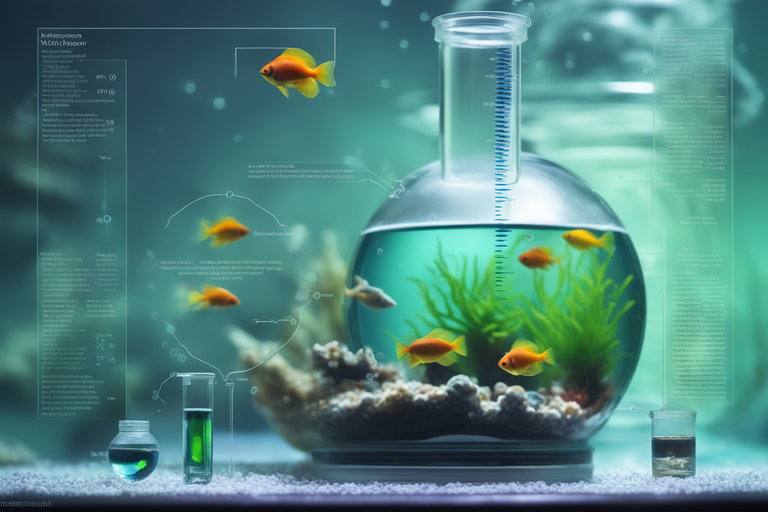
The role of KH, or carbonate hardness, in maintaining aquarium water hardness is fundamental and cannot be understated. It also significantly impacts pH levels, contributing to the overall stability of the aquarium environment.
Furthermore, understanding the relationship between KH and GH (General Hardness) is crucial for the proper management and health of the aquarium’s inhabitants.
Role of KH in Maintaining Water Hardness
In maintaining a balanced aquatic environment, an adequate level of carbonate hardness (KH) plays a significant role, as it ensures pH stability, which is crucial for the health and well-being of aquarium inhabitants. KH in an aquarium can be considered a key water parameter that directly influences water hardness.
- Carbonate hardness or KH regulates stable pH levels, preventing drastic changes that can stress aquatic life.
- KH and GH (general hardness) work in harmony to maintain the mineral balance in aquarium water.
- Accurate KH levels in your aquarium are crucial for the health and vitality of the fish and plant life.
- To measure KH and maintain appropriate levels, testing kits or strips are available.
- Techniques like adding baking soda or commercial products can raise KH if it is too low.
In the subsequent section, we will explore the effect of KH on pH levels.
Effect of KH on pH Levels
KH’s influence on pH stability, a fundamental aspect of aquarium chemistry, marks its vital role in the overall health and well-being of aquatic life. The effect of KH on pH levels is significant, as it acts as a buffer, resisting pH fluctuations and maintaining a stable pH level. Higher KH levels increase the pH of your aquarium water, providing a conducive environment for aquatic life.
A decrease in KH can lead to a lower pH, which can be harmful. Therefore, it’s important to monitor both kh and ph regularly, adjusting as necessary to ensure optimal conditions.
| Action | Effect on pH |
|---|---|
| Increase KH | Raises the pH (higher pH level) |
| Decrease KH | Lowers the pH (lower pH level) |
| High KH | Stable pH in an aquarium |
| Low KH | pH fluctuations |
| Monitor KH and pH | Maintains the pH of your aquarium water |
Measuring KH Level
Understanding the carbonate hardness (KH) of your aquarium’s water is critical for maintaining a stable environment.
There are various methods available for measuring KH, each with their own advantages and considerations.
After measurement, interpreting these KH levels accurately is essential to ensure the health and well-being of your aquarium inhabitants.
Methods to Measure KH
Measuring the KH level in an aquarium involves various methods, each aiming to accurately determine the carbonate hardness crucial for maintaining a stable aquatic environment. These methods to measure KH help monitor the level of KH, ensuring it’s within the ideal KH level range for the species in your tank.
One common method is to use KH test kits. These allow you to test the water and gauge the high KH levels or low levels present.
Water changes can help lower the KH level if it’s excessively high.
Use of buffering solutions or KH boosters can increase the KH when it’s too low.
Certain substrates and decorations can also influence KH and may either reduce the KH or increase it.
Monitoring KH will also aid in maintaining a balanced pH level in your aquarium.
Interpreting KH Levels
After implementing the various methods to measure KH, it is essential to accurately interpret these levels to ensure the health and stability of the aquarium environment. KH in aquarium is integral in maintaining the pH and overall water quality, providing a stable environment for your fish.
To interpret KH levels, use the following table:
| KH Level | Interpretation |
|---|---|
| Low (<4°dKH) | Likely to cause pH swings. Consider options to raise the KH. |
| Ideal (4-8°dKH) | Stable environment for most freshwater aquarium species. |
| High (>8°dKH) | May cause high pH. If fish are stressed, look at ways to lower the KH. |
Why would KH levels drop?
Understanding the reasons behind the drop in KH, or Carbonate Hardness, in a freshwater aquarium is essential for maintaining a stable and healthy environment for your aquatic life. KH, which represents the concentration of dissolved carbonates and bicarbonates, acts as a natural buffer against pH fluctuations. However, several factors can lead to a decrease in KH levels:
- Inadequate Water Changes: Regular water changes are critical in replenishing KH. Over time, the process of bacterial nitrification, where fish waste is converted into ammonia, nitrites, and nitrates, consumes carbonates and bicarbonates. Without periodic water changes, these essential components get depleted, leading to a drop in KH and, subsequently, pH instability.
- Overstocking the Aquarium: An overcrowded tank, especially one stocked beyond 85% of its capacity, can have unstable water parameters, including KH. The accelerated production of acids in an overstocked tank, due to higher fish waste, consumes carbonates/bicarbonates at a faster rate, leading to a decrease in KH.
- Excessive Introduction of New Fish: Adding too many new fish at once can shock the tank’s ecosystem. The sudden increase in bioload leads to more rapid acid production, depleting KH levels and potentially causing a pH crash.
- Overuse of CO2: While CO2 supplementation is beneficial for the growth of certain live aquarium plants, an overdose can be harmful. Excess CO2 dissolves into carbonic acid, increasing the acidity of the water. Initially, KH buffers this acidity, but with continuous overuse of CO2, KH levels will drop, followed by a decrease in pH.
- Natural Processes and Decor Items: Natural processes like the decomposition of plant material or the use of certain decor items like driftwood can also contribute to KH depletion. These materials can release acids into the water, gradually consuming KH.
- Use of Soft Water or Rainwater: Using soft water or rainwater, both of which are low in minerals, can lead to a decrease in KH. These water sources lack the necessary carbonates and bicarbonates to maintain stable KH levels.
Items that Lower KH Levels:
- RO (Reverse Osmosis) Water: Pure water that dilutes KH when mixed with aquarium water.
- Peat Moss: Releases tannic acids that bind with carbonates, reducing KH.
- Driftwood: Like peat moss, it releases tannins that can lower KH.
- Leaf Litter: Leaves such as Indian Almond Leaves release tannins and other acids.
- Soft Water/Rainwater: Using soft or rainwater for changes can lower KH due to low mineral content.
- CO2 Injection: Used for plant growth, but excessive use can reduce KH.
- Acid Buffers: Commercially available products specifically designed to lower KH.
- Vinegar or Citric Acid: Can be used carefully to lower KH.
- Certain Soil Substrates: Some specialized soils for planted tanks can lower KH.
- Almond Leaves: Popular in betta tanks, they release acids that can lower KH.
How to Raise KH Levels in Freshwater Aquarium
In this section, we will explore various methods to effectively increase the KH levels in a freshwater aquarium.
The KH level, also referred to as carbonate hardness, plays a crucial role in stabilizing the pH level of the tank water. Maintaining a high KH level is vital for the health of your aquatic species. If the KH level is too low, the pH in your freshwater aquarium can fluctuate, causing stress to the fish.
Here are some ways to raise KH levels:
- Baking Soda: A common and inexpensive way to raise KH levels. For every 30 gallons of water in your tank, dissolve one teaspoon of baking soda and add it to the aquarium.
- Crushed Corals or Shells: These contain calcium carbonate, which can significantly increase the KH level in your tank.
- Commercial Buffers: These are specifically designed to raise KH and pH levels in freshwater aquariums.
- Limestone: Considered a high KH rock, it can effectively raise the KH level when added to the tank water.
- Water Changes: Regular water changes can help replenish the minerals in the water that are beneficial for maintaining KH levels.
It’s essential to monitor KH levels regularly for a healthy freshwater aquarium.
Why would KH levels go up?
KH levels in an aquarium, referring to Carbonate Hardness, can increase due to several factors. These factors contribute to a higher concentration of carbonates and bicarbonates in the water, which are the primary components of KH. Here are some common reasons why KH levels might rise:
- Water Evaporation: Evaporation can lead to an increase in KH. As water evaporates from the aquarium, it leaves behind minerals, including carbonates and bicarbonates, thus concentrating these elements and raising the KH level.
- Use of Certain Substrates or Decor: Some aquarium substrates and decor, like limestone or coral sand, naturally release carbonates into the water. Over time, this can cause an increase in the KH levels of the aquarium.
- Addition of Buffering Agents: Aquarium enthusiasts sometimes intentionally raise KH levels using commercial buffering agents. These products are designed to increase carbonate hardness to stabilize pH levels, especially in tanks housing species that prefer alkaline conditions.
- Tap Water with High Carbonate Levels: If the tap water used for water changes has a high concentration of carbonates, this will naturally increase the aquarium’s KH over time. It’s important to test tap water regularly to understand its KH contribution.
- Use of Baking Soda or Similar Compounds: Some aquarists use baking soda (sodium bicarbonate) to raise KH levels. Adding baking soda directly increases the concentration of bicarbonates in the water, thereby increasing the KH.
- Lack of Regular Water Changes: In some cases, infrequent water changes can lead to an accumulation of carbonates from various sources, including fish waste and decaying organic matter, resulting in a gradual increase in KH.
Items that Raise KH Levels:
- Baking Soda (Sodium Bicarbonate): A common household item used to increase KH.
- Buffering Agents: Commercially available products specifically designed to raise KH.
- Crushed Coral: Often used as a substrate, it slowly releases carbonates into the water.
- Limestone: As a decor item, it leaches carbonates and raises KH.
- Dolomite Chips: Similar to limestone, used in the substrate or filter media.
- Coral Sand: A substrate option that slowly dissolves, increasing KH.
- Marine Salt Mixes: Used in saltwater aquariums and some brackish setups, they can raise KH.
- Cichlid Salt: A product used for African Cichlid tanks to increase KH.
- Calcium Carbonate: Often used in the form of powder or tablets.
- Alkaline Buffer Products: Specific products aimed at increasing aquarium alkalinity.
How to Lower KH Levels in an Aquarium
Transitioning from methods to raise KH levels, let’s now delve into the strategies to lower KH levels in an aquarium when necessary for optimal aquatic health. A high KH can sometimes lead to higher pH levels that may be unsuitable for certain freshwater fish, so maintaining a low KH becomes crucial.
One effective strategy is to incorporate distilled water during a water change. Distilled water has virtually no KH, hence when mixed with the existing aquarium water, it lowers the overall KH. The amount of water to be replaced depends on how much you want to reduce the KH.
Another method is to add soft water fish (suche as neon tetra, angelfish, ram cichlids) to your freshwater tank. This fish produce waste that contributes to the reduction of KH levels. Soft water fish thrive in low KH conditions, offering a natural way to control KH levels.
Increasing the amount of CO2 in the tank can also lower KH. The CO2 reacts with water to form carbonic acid, which in turn reduces KH and lowers pH. However, this method should be used judiciously to avoid drastic changes that could stress the fish.
Especially if you’re nurturing sensitive creatures like shrimp, the approach needs to be both effective and gentle. Starting with RO (Reverse Osmosis) water is a great first step. RO water is like a blank canvas – it’s free from the usual suspects like carbonates and bicarbonates that crank up your KH. Mixing in about 50% RO water during your regular water changes can cut down the KH levels by half. It’s a straightforward and controlled method that doesn’t shock your aquatic buddies with sudden changes.
Now, just using RO water isn’t enough. You’ve got to strike the right mineral balance. This is where remineralizing agents like Salty Shrimp GH/KH+ come into play. They’re like a magic potion that adds back essential minerals without hiking up the KH. Think of it as seasoning your aquarium water just right – enough to keep your fish and plants happy, but not too much to make the water hard. Additionally, for an extra touch, consider using organic acids. Natural elements like dried leaf litter or alder cones can subtly reduce KH. They release acids that gently interact with carbonates, bringing down the KH without a fuss. It’s a more natural, gradual approach that your underwater garden will appreciate.
Choosing the Ideal KH Level for Your Aquarium
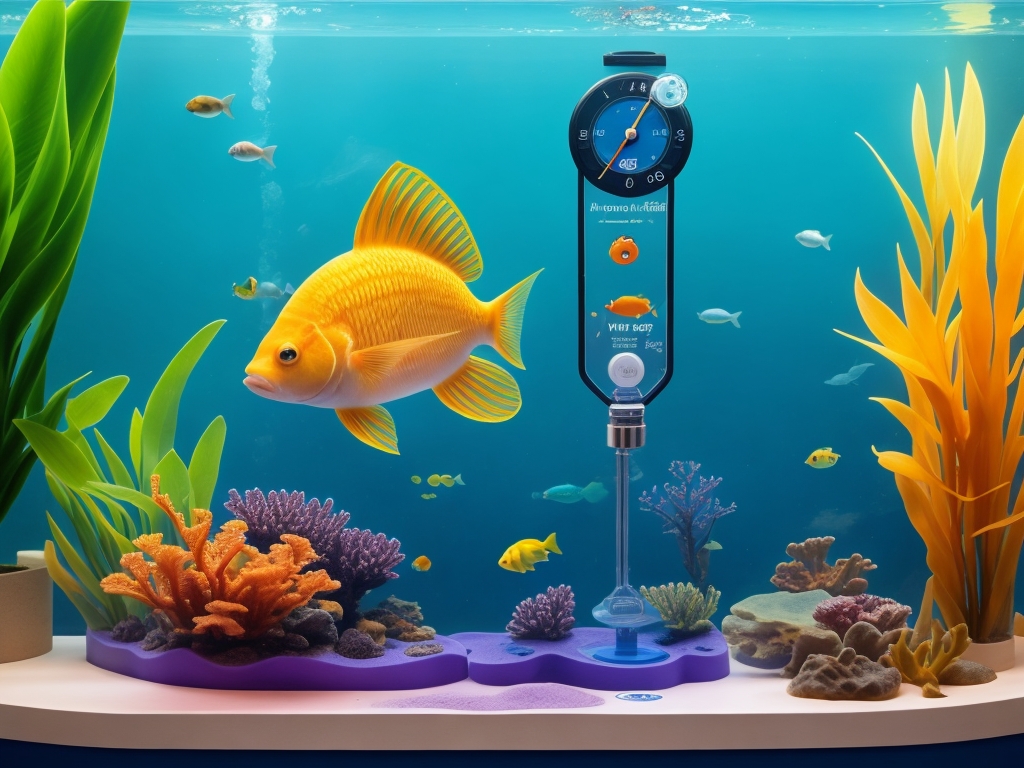
During the setup and maintenance of an aquarium, selecting the optimal KH level is a fundamental step to ensure a healthy and stable environment for the aquatic inhabitants. This selection process is crucial as it helps to keep the pH level in your aquarium stable, which is vital for the survival of fish and plants.
The ideal KH level varies depending on the type of aquarium and its inhabitants. For instance, saltwater aquariums and hard water fish species typically require a higher KH level compared to those that inhabit soft or acidic water. You can raise the KH level in your aquarium by adding a carbonate buffer or using tap water, which usually has a significant amount of KH.
Selecting the ideal KH level involves:
- Understanding the needs of the various fish species in your aquarium
- Regularly checking the pH level in your aquarium to monitor stability
- Knowing the difference between hard and soft water, and acidic and alkaline water
- Learning the appropriate way to raise the KH level when necessary
- Recognizing the potential impact of tap water on the KH level in your aquarium
Therefore, the aquarium owner must have a good understanding of water chemistry to maintain a healthy environment for the aquatic life.
Other Considerations
Apart from understanding KH in aquariums, there are some other crucial aspects to consider.
These include the impact of KH on freshwater fish and plants, the effect of water changes on KH levels, and the role of KH in tap water. Each of these factors plays a significant role in maintaining a healthy and stable aquarium environment.
Impact of KH on Freshwater Fish and Plants
In assessing the impact of KH on freshwater fish and plants, it is crucial to consider how variations in carbonate hardness can influence the overall health and growth of these organisms. The presence of carbonate ions in the water plays a vital role in stabilizing the pH of the water.
Pure water, devoid of these ions, can cause pH swings which are detrimental to fish, especially soft water fish. High KH levels will raise pH, creating an alkaline environment. An abundance of compounds present in the water can cause pH to drop, making the environment acidic. KH helps buffer these changes, maintaining a stable, healthy environment. Sudden changes in KH levels can stress fish and inhibit plant growth.
As we explore further, we will delve into the effect of water changes on KH levels.
Effect of Water Changes on KH Levels
In exploring the impact of KH, or Carbonate Hardness, on freshwater fish and plants, it’s essential to understand its critical role in aquarium water chemistry. KH, indicating the presence of carbonate (CO3) and bicarbonate (HCO3) ions, is pivotal in maintaining pH stability. These ions act as a buffer against pH fluctuations, which is especially significant in an aquatic environment.
For freshwater species, particularly those preferring soft water, like discus or certain tetras, the stability provided by KH is vital. In natural habitats, these fish thrive in waters with stable pH levels, which are often achieved through a balance of carbonate hardness. In aquariums, however, the absence of adequate KH can lead to unpredictable and harmful pH swings.
Conversely, high KH levels tend to elevate the pH, creating an alkaline environment suitable for species like African cichlids, which are accustomed to such conditions. It’s a delicate balancing act, as an overabundance of certain compounds, such as nitrate and phosphate from fish waste or decaying plant matter, can lower the pH, making the water more acidic. KH plays a protective role here, buffering these changes and maintaining a consistent, safe environment for both fish and plants.
Sudden shifts in KH levels can be stressful for aquatic life, potentially inhibiting growth in plants and causing health issues in fish. Therefore, understanding and managing KH levels through regular water testing and adjustments, such as water changes, is crucial for a thriving aquarium ecosystem.
In the next sections, we’ll delve deeper into how water changes and other methods can effectively manage KH levels, ensuring a healthy and balanced environment for your aquatic plants and fish.
The Role of KH in Tap Water
While it is commonly used for water changes in aquariums, tap water often has variable levels of KH that can significantly impact the overall water chemistry. It’s important to understand that the KH in tap water can fluctuate due to several factors and can influence the stability of pH in the aquarium, affecting the health of the aquatic life.
- Source Variation: The source of tap water can vary, affecting its KH levels.
- Treatment Processes: Water treatment processes can alter the KH content.
- Seasonal Changes: Seasonal variations can affect the mineral content in water, altering KH.
- Local Geology: The geological composition of the local area can influence KH levels in tap water.
- Infrastructure: Older pipes can affect water chemistry, potentially increasing KH.
In conclusion, maintaining optimal KH levels in an aquarium significantly contributes to the health and thriving of aquatic life.
The understanding and management of KH, from measuring to adjusting its levels, becomes an essential practice in aquarium maintenance.
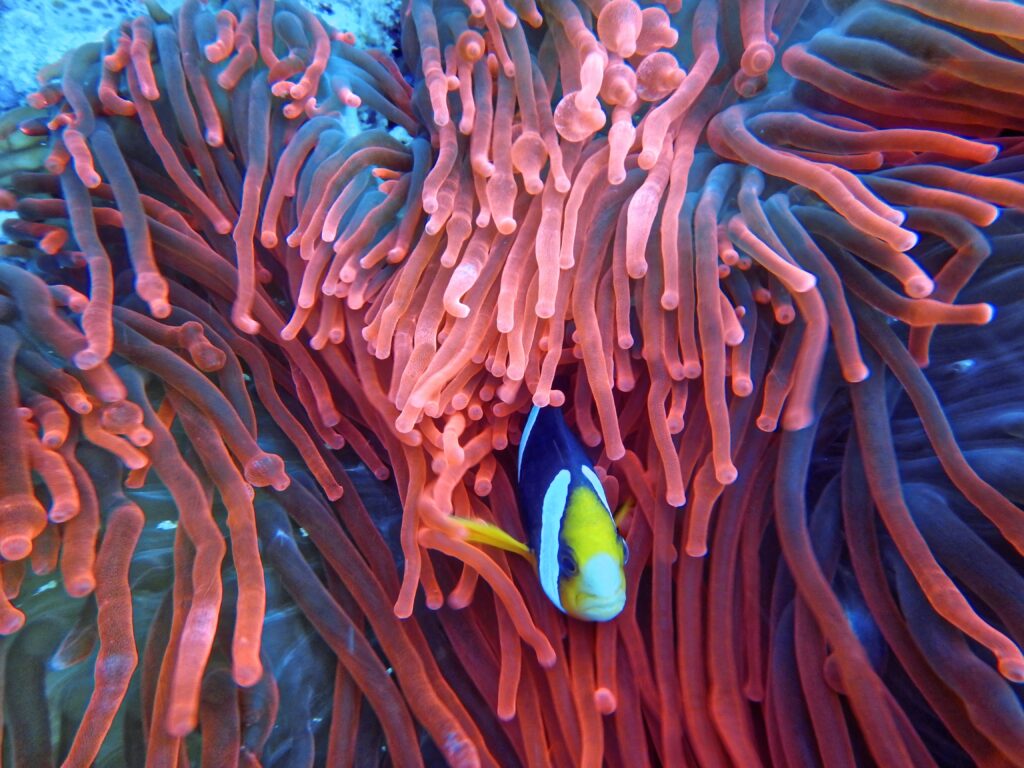
Striking the ideal balance, in conjunction with other water chemistry considerations, ensures a stable, beneficial environment for aquarium inhabitants.
Hence, mastery of water chemistry, particularly KH, becomes a cornerstone in creating and sustaining a vibrant aquatic ecosystem.

